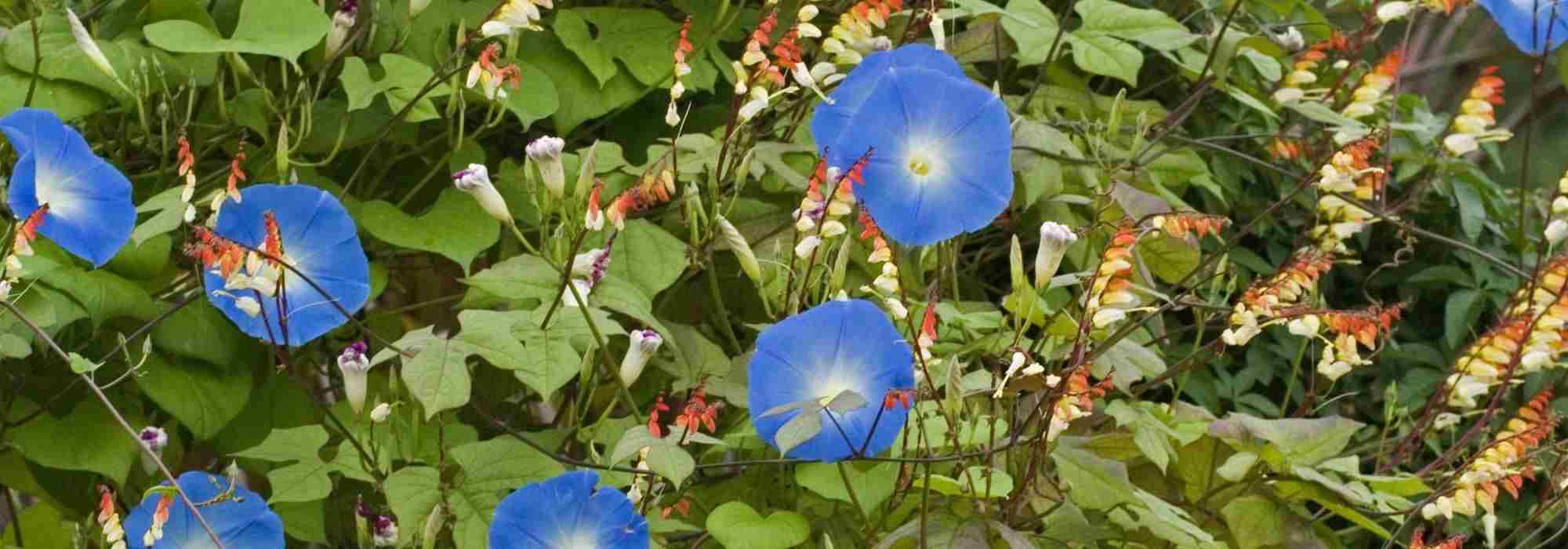
6 annuals or biennials for the sun
Our selection of sun-resistant flowers
Contents
When sunny days arrive, it’s time to choose your flowers for window boxes or the garden that can withstand the sun. Annual plants and biennial plants for sunny situations are plentiful. Whether they are upright, climbing, trailing, planted in flowering pots, in the vegetable garden, in borders, or in meadows, they are easy to grow and maintain. Planting the young plants takes place in spring, and some can also be sown directly in situ. Moreover, you can enjoy them even longer by bringing your plants indoors for winter, before the first frosts arrive! To assist you in your choice, discover our selection of flowers that love full sun.
Osteospermum 'Deep Purple', in all simplicity
Osteospermum, or Cape Daisy, is an annual native to South Africa. Growing to about 30 cm tall, it is perfect for flowering pots. The flowering of the ‘Deep Purple’ variety occurs from May to September. Its purple flower is simple, but its vibrant colour will brighten up a country scene! Plant Osteospermum ‘Deep Purple’ from April in borders, in full sun, but sheltered from the wind. Additionally, prefer a poor, well-drained, sandy soil. Indeed, overly rich soil will encourage leaf growth at the expense of flowers. It requires little watering in open ground and is quite drought-resistant. In a pot on a terrace, this Cape Daisy ‘Deep Purple’ pairs well with Nemesias, Brachycomes, and Nigellas.
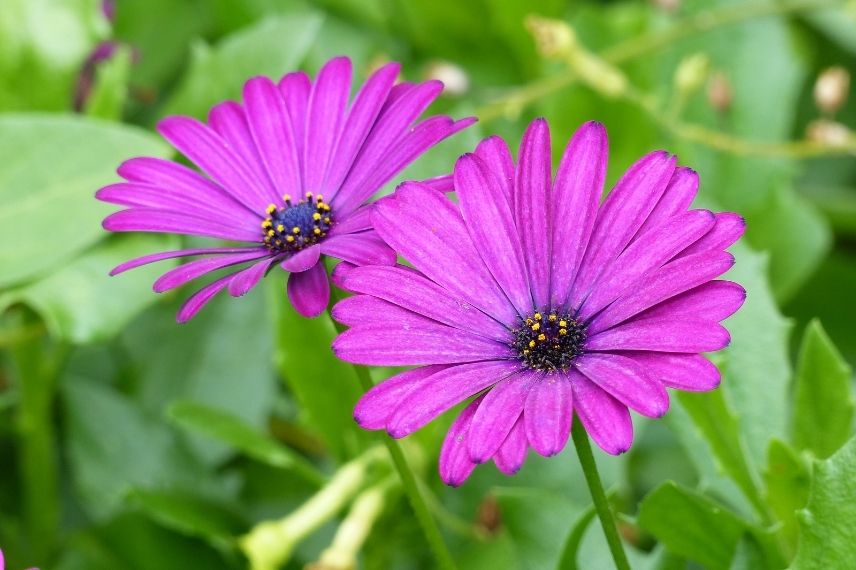
Read also
10 Easy Annual Flowers to SowThe scarlet Dipladenia 'Diamantina Jade Scarlet'!
The Dipladenia ‘Diamantina Jade Scarlet’ has an abundant flowering from May until the first frosts: its star-shaped flowers are a vivid red that sparkles! It is also known as Mandevilla x sanderi ‘Diamantina Jade Scarlet’. This climbing plant wraps itself around an arch, trellis, or pergola and brings cheer to a terrace or balcony! This annual loves the sun and is quite drought-resistant thanks to its large roots that serve as reserves. Its cultivation is easy for beginner gardeners. Be careful, as its sap is toxic and irritating to the touch. Plant the Dipladenia ‘Diamantina Jade Scarlet’ in light, sandy soil. Wait for the root ball to dry out between waterings and empty any stagnant water from the saucer. Pair this Dipladenia with other climbing plants: Black-eyed Susans, Passionflower, or Hardenbergia violacea. In pots or hanging baskets, accompany it with Euphorbia ‘Diamond Frost’ or Petunias.
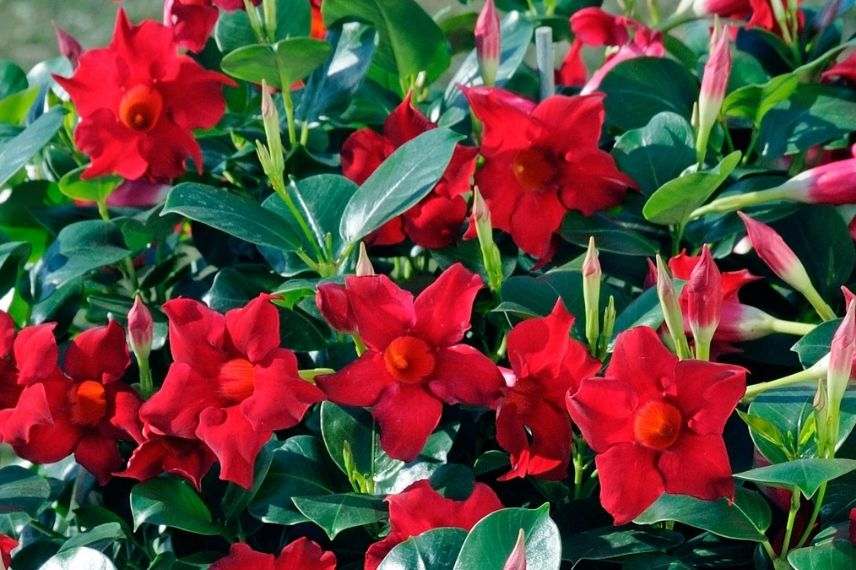
Discover other Annuals
View all →Available in 1 sizes
Available in 1 sizes
Available in 1 sizes
Available in 1 sizes
Available in 1 sizes
Available in 1 sizes
Available in 1 sizes
Available in 1 sizes
Available in 1 sizes
Available in 1 sizes
Petunia 'Blue Picotee', a profusion of flowers
The tender annual Petunia ‘Blue Picotee‘ with a semi-trailing habit is ideal for hanging baskets, pots, or window boxes. Its clump can cascade up to 40 cm with a spread of 60 cm. The flowering of Petunia x hybrida ‘Blue Picotee’ occurs from June to October. Elegant bi-coloured trumpet-shaped flowers open, tinted in a deep and intense blue, adorned with a white edge. Plant this trailing Petunia for containers from April to May in humus-bearing, well-drained soil. Choose a sunny location sheltered from the wind. It withstands heat well, but watering should still be regular. Note that excessively alkaline water may cause leaf chlorosis, which is a discolouration of the leaves. Create a lovely flowering pot by combining Petunia ‘Blue Picotee’ with Calibrachoas, Ipomoeas, or Dichondra ‘Silver Falls’.
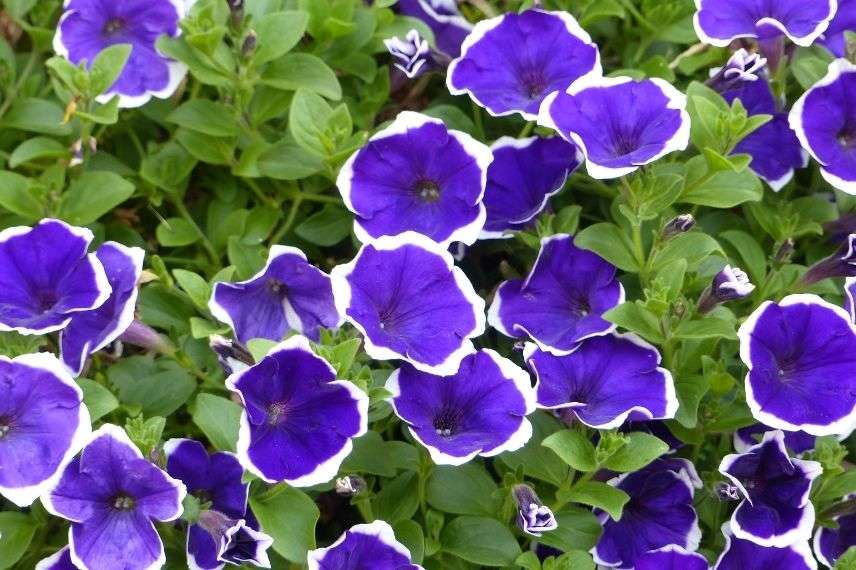
Marigold 'Strawberry Blonde', a friend in the vegetable garden
Marigold, also known as Tagetes, is an easy-to-grow annual plant with flowers that withstand the sun. Tagetes patula ‘Strawberry Blonde’ flowers from May to September. Its pompom flowers display warm colours that change throughout the flowering period: golden, coppery, pink, and carmine. Plant Marigold in full sun in ordinary, well-drained garden soil. Do not overwater to avoid fungal diseases. Its distinctive scent makes it an excellent natural repellent in the vegetable garden to combat harmful insects, particularly aphids that target tomato plants. In borders, beds, or containers, pair Marigold ‘Strawberry Blonde’ with Ageratums, Zinnias, Artemisias, or small grasses like Stipas.
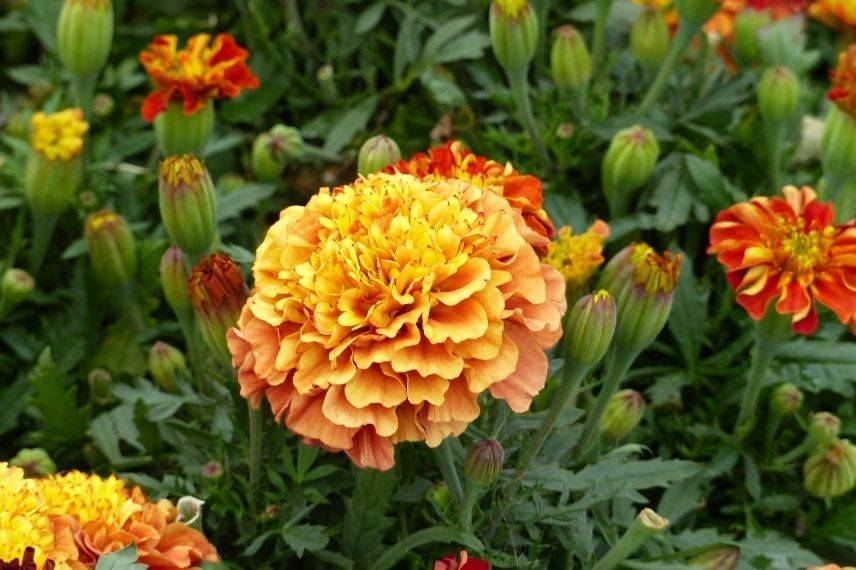
The lush Ipomoea 'Grandpa Ott'!
The Ipomoea ‘Grandpa Ott’ boasts generous heart-shaped foliage and a profusion of exotic-style corolla flowers. Its sun-loving flowers are dressed in a striated blue-purple with red. Its climbing and opulent growth allows for the creation of a jungle-like garden! Grow Ipomoea purpurea ‘Grandpa Ott’ in full sun on a support: a trellis or mesh in well-drained garden soil. Regularly remove faded flowers and apply fertiliser monthly. Note that sweet potato is part of the genus Ipomoea. Not flowering, it is mainly used in pots, containers, or as ground cover for its dense and trailing foliage, like the Ipomoea ‘Sweet Caroline Light Green’. Pair Ipomoea ‘Grandpa Ott’ with Lofos or Nasturtiums, whose flowers will contrast beautifully with the blue-purple of the Ipomoea.
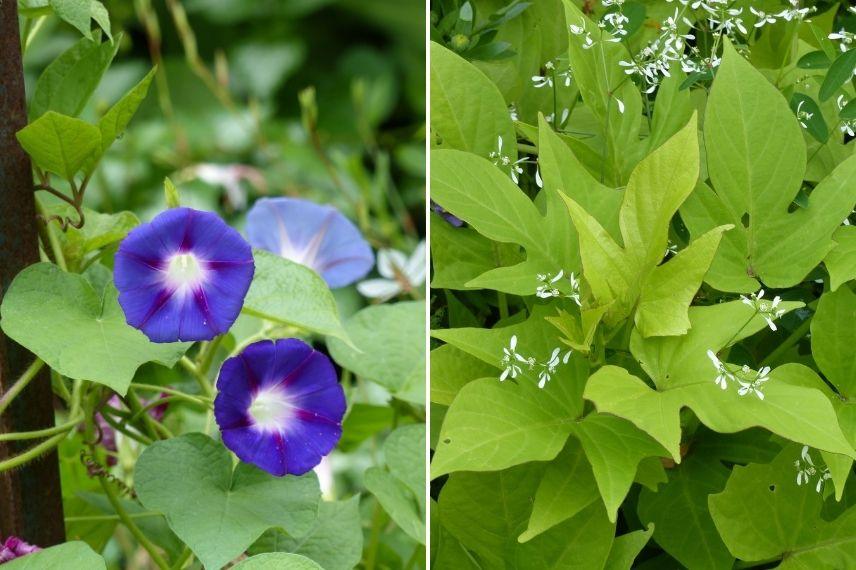
On the left: Ipomoea ‘Grandpa Ott’, on the right: Ipomoea ‘Sweet Caroline Light Green’
Icelandic Poppy for a bucolic and warm atmosphere
The Icelandic Poppy, Papaver nudicaule in Latin, is a biennial plant for very sunny situations. It forms rounded clumps with bluish-green foliage. This Poppy produces a mix of flowers 4 to 5 cm in diameter in warm colours: white, pink, red, orange, and yellow. Its magnificent flowering occurs from May to August. These single flowers, resistant to the sun, will brighten up a border with their hues! Sow the Icelandic Poppy preferably in autumn, or in spring, in poor, sandy, or even stony soil to ensure good drainage. It is a perfect plant to brighten up a low-maintenance garden. This biennial is often used in flower meadows or rock gardens. In dry soil, pair it with Achilleas, Agastaches, Cosmos, Centauries, and Scabious.
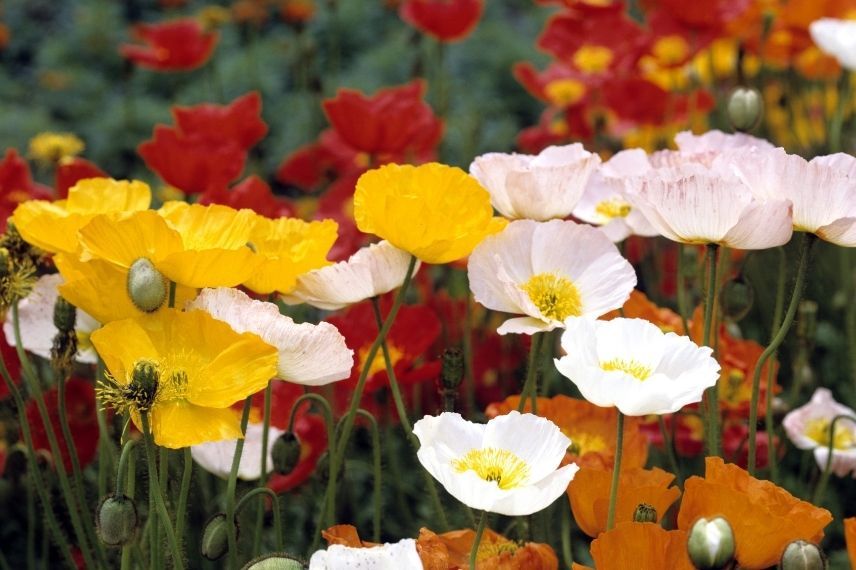
To go further
Discover our tips:
- Subscribe!
- Contents
































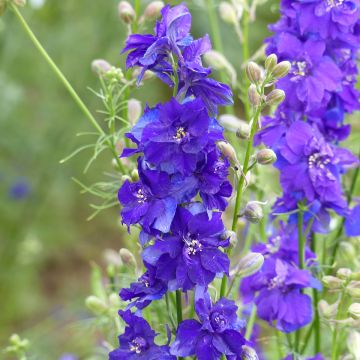
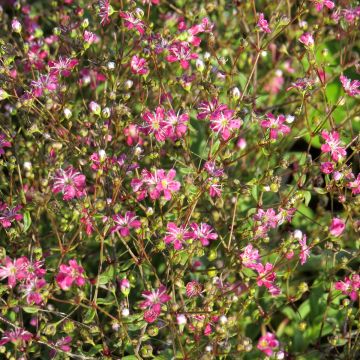
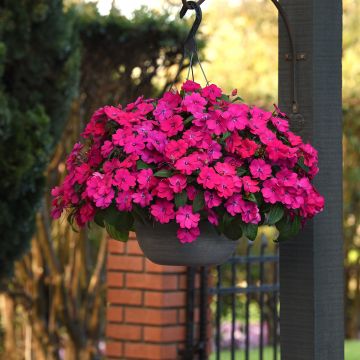
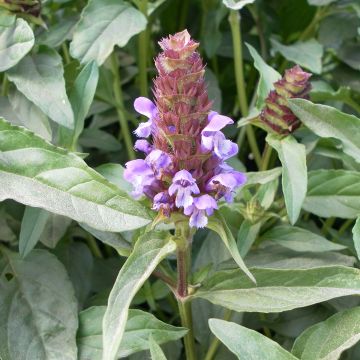
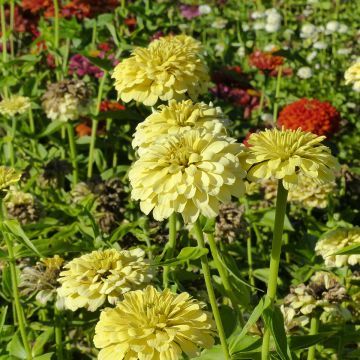
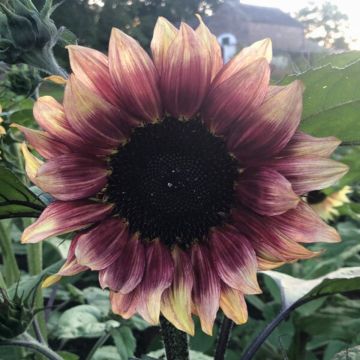
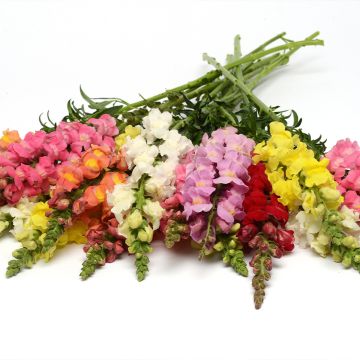
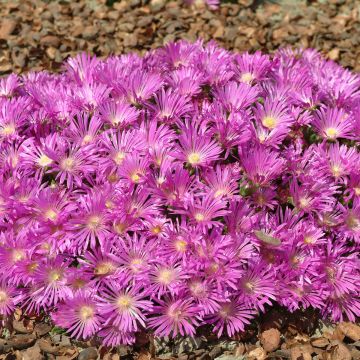
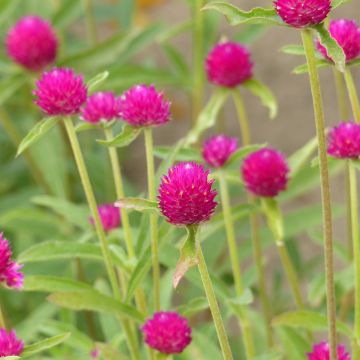
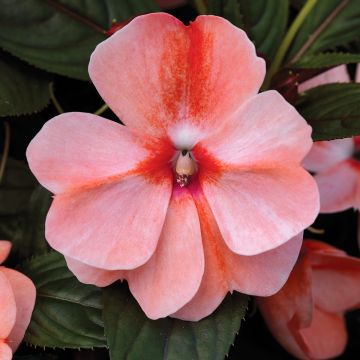
Comments